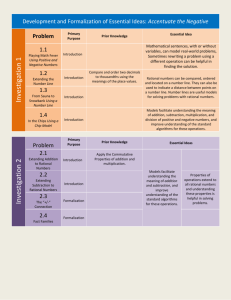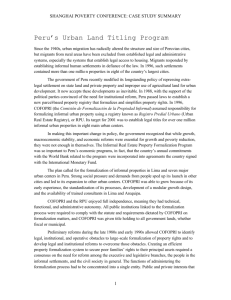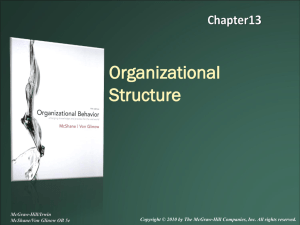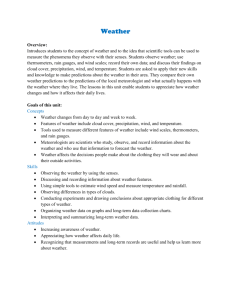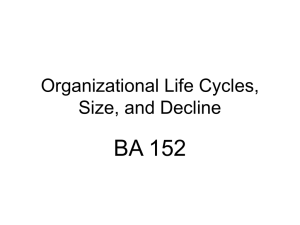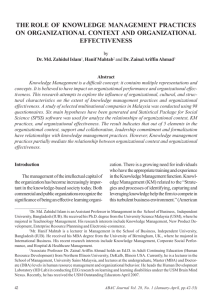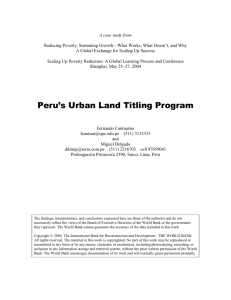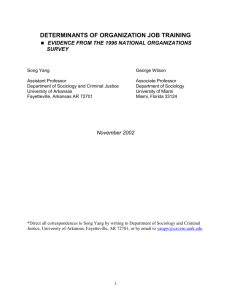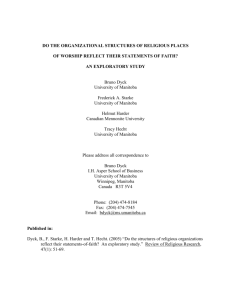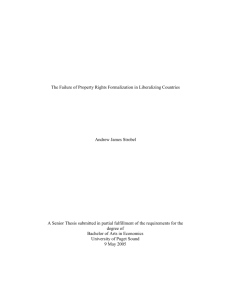Development and Formalization of Essential Ideas
advertisement
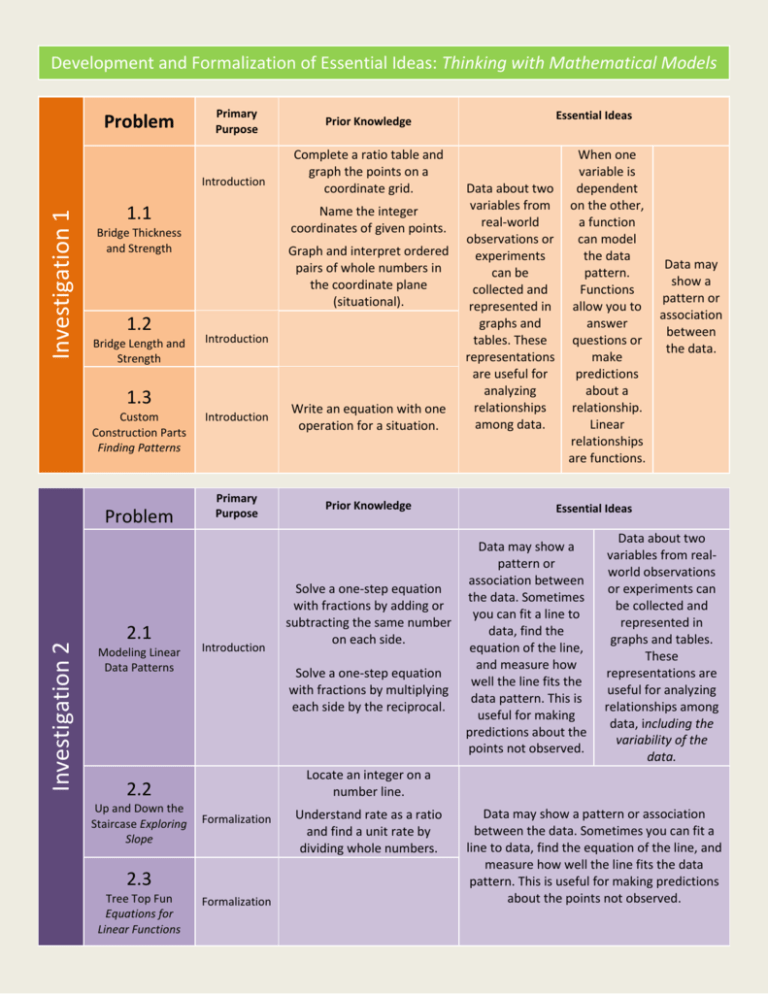
Development and Formalization of Essential Ideas: Thinking with Mathematical Models Problem Primary Purpose Investigation 1 Introduction 1.1 Bridge Length and Strength Graph and interpret ordered pairs of whole numbers in the coordinate plane (situational). Introduction 1.3 Custom Construction Parts Finding Patterns Investigation 2 Problem 2.1 Modeling Linear Data Patterns Introduction Write an equation with one operation for a situation. Primary Purpose Prior Knowledge Introduction Essential Ideas When one variable is Data about two dependent variables from on the other, real-world a function observations or can model experiments the data can be pattern. collected and Functions represented in allow you to graphs and answer tables. These questions or representations make are useful for predictions analyzing about a relationships relationship. among data. Linear relationships are functions. Data may show a pattern or association between the data. Essential Ideas Data may show a pattern or association between the data. Sometimes you can fit a line to data, find the equation of the line, and measure how well the line fits the data pattern. This is useful for making predictions about the points not observed. Data about two variables from realworld observations or experiments can be collected and represented in graphs and tables. These representations are useful for analyzing relationships among data, including the variability of the data. Locate an integer on a number line. Formalization 2.3 Tree Top Fun Equations for Linear Functions Solve a one-step equation with fractions by adding or subtracting the same number on each side. Solve a one-step equation with fractions by multiplying each side by the reciprocal. 2.2 Up and Down the Staircase Exploring Slope Complete a ratio table and graph the points on a coordinate grid. Name the integer coordinates of given points. Bridge Thickness and Strength 1.2 Prior Knowledge Formalization Understand rate as a ratio and find a unit rate by dividing whole numbers. Data may show a pattern or association between the data. Sometimes you can fit a line to data, find the equation of the line, and measure how well the line fits the data pattern. This is useful for making predictions about the points not observed. 2.4 Boat Rental Business Solving Linear Equations Practice and Application 2.5 Amusement Park or Movies Intersecting Linear Models Investigation 3 Problem Practice and Application Use a ratio (rate) table to find a percent of a number. Primary Purpose Prior Knowledge Data may show a pattern or association between the data. Sometimes you can fit a line to data, find the equation of the line, and measure how well the line fits the data pattern. This is useful for making predictions about the points not observed. Essential Idea 3.1 Rectangles with a Fixed Area 3.2 Distance, Speed and Time Introduction Data about two variables from real-world observations or experiments can be collected and represented in graphs and tables. These representations are useful for analyzing relationships among data, including the variability of the data. – Inverse Variation. Introduction 3.3 Planning a Field Trip Finding Individual Cost 3.4 Introduction Modeling Data Patterns Formalization Problem Primary Purpose Prior Knowledge Essential Idea Investigation 4 4.1 Vitruvian Man Relating Body Measurements Introduction 4.2 Older and Faster Negative Correlations Introduction 4.3 Correlation Coefficients and Outliers Formalization 4.4 Measuring Variability Standard Deviation Formalization Data may show a pattern or association between the data.... This is useful for making predictions about the points not observed. – Correlation and Standard Deviation Data may show a pattern or association between the data. Sometimes you can fit a line to data, find the equation of the line, and measure how well the line fits the data pattern. This is useful for making predictions about the points not observed. Investigation 5 Problem Primary Purpose Prior Knowledge Essential Idea 5.1 Wood or Steel? That’s the Question Introduction 5.2 Politics of Girls and Boys Analyzing Data in Two-way Tables Introduction 5.3 After School Jobs and Homework Working Backward: Setting up a TwoWay Table Formalization Categorical data must be analyzed om different ways than numerical data including 2-way tables to analyze relative frequencies.
